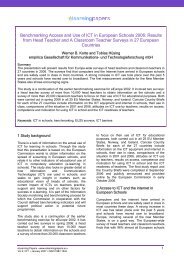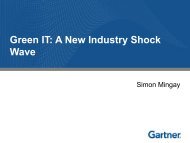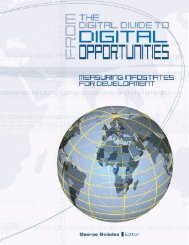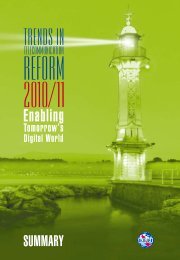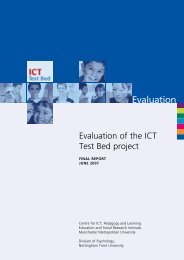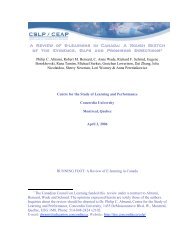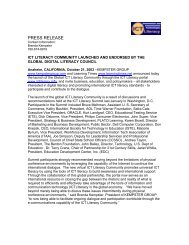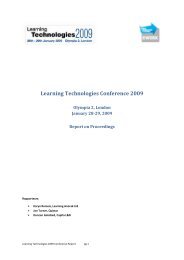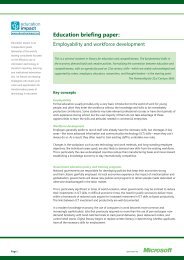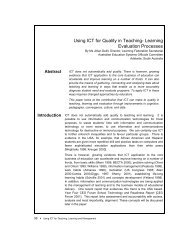147 pages pdf - ICT Digital Literacy
147 pages pdf - ICT Digital Literacy
147 pages pdf - ICT Digital Literacy
You also want an ePaper? Increase the reach of your titles
YUMPU automatically turns print PDFs into web optimized ePapers that Google loves.
The Learning Tools & Technology Tsunami – Will You Sink Or Swim?<br />
#340: Don't Overkill On The Tool(s)<br />
Use software that is easy to use and doesn't require support. For example, I use PowerPoint<br />
broadcasts from our web server. It doesn't require support from our technical team and any<br />
technology that can be viewed in a browser is supported.<br />
Scott Jeffery-Madison<br />
#341: Piggy Back Corporate IT's Infrastructure<br />
Your IT department probably paid good money for tools and technology, and it's bad form to pay<br />
twice for the same thing. Why buy a threaded discussion tool when one may already be owned?<br />
Save your dollars for other budget line items.<br />
Tom Swider<br />
#342: The Right Less is More<br />
In implementing an enterprise learning solution, don't exchange an extensive feature list (aka -<br />
bells and whistles) for strong and compatible enterprise architecture.<br />
Anonymous<br />
#343: Risky Media Player<br />
Security is a major concern for most corporations and the IT departments are usually in charge<br />
of it. Create content using tools that do not jeopardize corporate operations with security holes<br />
due to media players.<br />
Rick Zanotti<br />
RELATE Corporation<br />
#344: Define & Document Your Content Interoperability Framework<br />
E-Learning brings a new dimension to learning practitioners - that of moving content around the network<br />
and understanding the server side dependencies involved. Standards do a lot to advance the cause of<br />
interoperability with regard to content resources (asynchronous, synchronous, formal, informal, etc.)<br />
communicating with system resources (e.g., the LMS). However, standards are only one layer in a robust<br />
definition of a complete enterprise level framework. Other factors include network configuration, firewalls<br />
and security policies; content deployment scenarios (local, hosted, hosted outside firewalls, etc.); content<br />
tool formats (and how they incorporate/generate standards tags); and considerations for managing,<br />
assembling and reusing modular components. Defining and documenting how this 5-layer framework<br />
works in your organization and providing guidelines for testing and import processes (e.g., acceptance<br />
criteria) will go a long way to solving the content interoperability challenge and expanding your enterprise<br />
learning footprint further and faster.<br />
Grant Ricketts<br />
Saba<br />
#345: Caching Out<br />
Make sure if you are using a cache server to have caching disabled for the IP or Domain Name<br />
of the server where your LMS and courses reside. If not disabled, this will cause many problems<br />
for users on your network as they navigate through a course (e.g. blank white screens etc.)<br />
Randy Fingleton<br />
Steelcase<br />
701 e-Learning Tips by The MASIE Center www.masie.com 68



